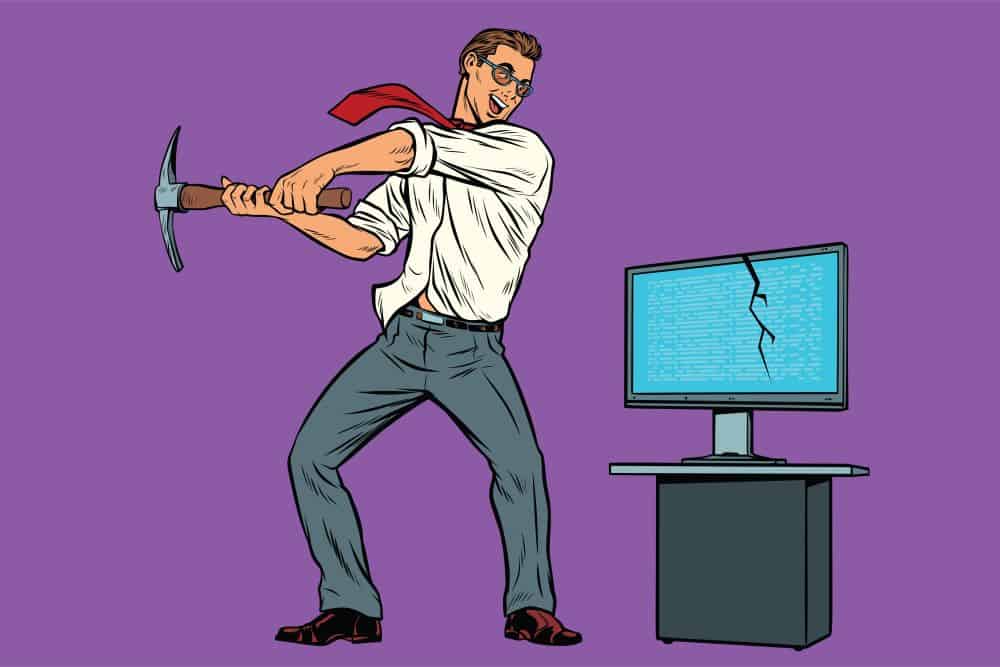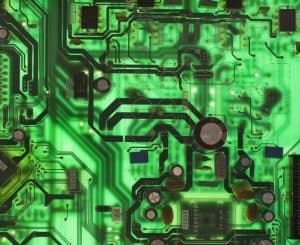
Almost all web security resources and news out there make reference, at some point, to malware. The term in itself sounds pretty strange and, used in so many different contexts, can easily confuse people. If you too have various security concerns and want to stay up to date with what’s relevant in the field, we get that you can often become confused.
The truth is that there are many different ways that people, on different occasions, explain what is a malware, what does malware mean, and what it even does. That’s because there are many different types of malware into the wild. And depending on their types, there is often more than one way on how to get rid of malware.
I know it doesn’t look like we’re really helping you right now, but we do have a point. Malware can mean so many different things because of its essence, which is, malicious software.
That’s right, the peculiar name that we get to hear of in so many contexts comes from the contraction of these two words: malicious + software.
While it might make things clearer to you, it doesn’t make it easier, right? Because, really, any piece of software out there with malicious intent is malware. Which brings us to the next question, of what is malicious intent?
Before we get the ball of questions rolling, let’s pause and take it strategically. Despite the broadness of the term, there are still ways to declutter your initial question of what is malware, with the right sub-questions and the answers that derive from it.
Types of malware – or what does malware do?
Going by the extended definition of malicious intent, malware can literally do anything: damage devices, steal data, overwrite data, steal system resources, prevent you from using the device as intended. In short, causing a mess.
Practice shows us that there are several specific categories in which different types of malware can fall. But keeping the larger sense in mind, the same practice came up with the PUP term, which stands for Potentially Unwanted Program.
So, if you surf the web on topics related to malware software and bump into PUP malware, you should know it’s pretty much the same thing – a term that describes unwanted programs, from adware and spyware to Trojans.
Now, trying to narrow things down a little bit, we must add the following. Malware may come in different forms and it doesn’t just change the way it looks, from one malware to another. It also changes what it does and how it spreads into the wild. The main categories identified so far include but are not necessarily limited to:
- Adware– more annoying than harmful, adware is just aggressive advertising. Sometimes, some pop-ups can be a gate for other malware to infect your computer, but their actions are generally not malicious.
- Botnets– not a malware, but a group of malware-infected devices that form a network and that is controlled by a hacker with specific malicious intents. From organizing DDoS attacks to simply sending spam, an attacker can do many things when controlling a botnet.
- Cryptojacking– a type of malware that gets in with the help of another malware (usually a Trojan), cryptojacking is also known as malicious cryptomining. Simply put, it steals your system resources and uses it to mine for cryptocurrencies and make money for your attacker.
- Keylogger– a dangerous way of stealing data, the keylogger malware monitors your system’s keyboard and records everything you type. The attacker will take sensitive information out of it, such as credit card details or account passwords.
- Ransomware– more of an extorsion method, this malware locks down your content, asking for a payment under the threat of erasing your data. Infection happens through drive-by downloading or malicious emails and often the victims pay but don’t get their data back.
- Rootkit– staying hidden from the user and from the operating system, this type of malware gains administrator privileges and transfers it to the hacker that distributed it. By doing so, it puts the attacker in full control over your device.
- Spyware– with a very suggestive name, spyware is malware intended to spy. It lurks in the background of your device, watching the steps you take and how you interact online and offline. From surfing habits to passwords and credit card numbers, it can spy on many things.
- Trojans– disguised as legitimate software, trojans may also often stay hidden in legitimate software that a hacker has previously tampered with. Because of its hidden nature, it often acts discreetly. What’s worse, it can allow other types of malware to enter your system.
- Viruses– computer viruses infect clean files and self-replicate on a device, though one of their purposes is to infect other clean files as well. From corrupting files, sometimes even deleting them, to damaging a device’s core functionality, it does a lot of harm.
- Worms– similar to viruses, in the sense that they self-replicate, worms tend to harm the network rather than the device itself. They spread either locally, or through the web, via network interfaces, infecting one system after another and consuming most of the bandwidth.

How to identify and how to remove malware
After learning about what is pup malware and the main types of malware out there, you have all the reasons to be concerned: malware that is intended to stay hidden will most likely do so.
Unless it’s adware or ransomware, which will pop up on your screen and make it clear that you have a problem… Or unless it’s a worm, which will take up your network resources, or a cryptomining malware, which will gulp on your system resources… identifying it can be tricky…
What’s more, even if you suspect that you’ve got viruses, based on what does malware do to your device, it can still be difficult to pinpoint the source of the infection. You can look up for particular signs, such as:
- The device freezes without an obvious reason, randomly;
- You can’t seem to find certain files that you’re pretty sure you had stored on the device;
- You keep bumping into files that you’re not sure why are there and what they do;
- The device starts running slower and slower and the processor turns out to be hyperactive even when you’re not doing much on your computer;
- You are running out of battery sooner than you should;
- You notice that the device turns on/off the internet connection, all by itself;
- Your data traffic is used faster and your bill gets charged with calls or texts to premium numbers you’re pretty sure you haven’t called at.
Long story short, whether it’s a desktop, a laptop or a smartphone, if you start noticing things like the ones above described, most likely you have some kind of malware hidden on your device. And so, you’re right to ask yourself how to get rid of malware.
The bad news on how to remove malware
As if the fact that certain types of malware can stay hidden for long while silently doing damage wasn’t bad enough, we’ve got some more… Because of the many forms that malware can take, and all the particularities regarding how it infects, how it damages, and how it spreads, there isn’t one, universal, surefire way to get rid of malware.
What you should be doing is to look up for general or even more specific information on how to remove computer viruses. Regardless if you had an antivirus installed at the time of the infection or not, running a full system scan is the first thing to do.
Before you assume that your antivirus is not good enough (because it’s free), give it a try and see what it finds. If you get no results but you keep getting signs of pup malware on the device, consider using a more advanced antivirus.
When you can’t seem to find a solution yourself, the option to bring the device to its factory settings and then restore a previous backup can work wonders.
In the meantime, it might not hurt to check up the following resources we’ve put together for you, discussing similar instances, like:
How do I know if my PC is hacked?
Or
Does my phone have a virus? How to detect & remove a virus
After all…
Such malicious software is created by teams of hackers. The purpose isn’t to make harm, per se, but rather to make money out of it. So, they create malware and spread it themselves. Or just start bragging with it on the Dark Web, selling it to whoever bids higher.
Some people just use it to protest for something and they are careless of how many people suffer in their process of expressing discontent. Other people create it just for fun, to prove something to themselves or to the world, often to test security.
And there are even people who are paid loads of money to create malware that will serve as weapon in a cyberwar between governments – should anything go wrong, the malware can still get into the wild and affect many other computers than the initial intended destination (see Stuxnet, in our previous article with the ultimate list of computer virus names).
Whatever the situation may be, you clearly don’t need malware. And the sooner you realize you’ve been infected and take action to get rid of it, the fewer damages you’ll have to cope with!






